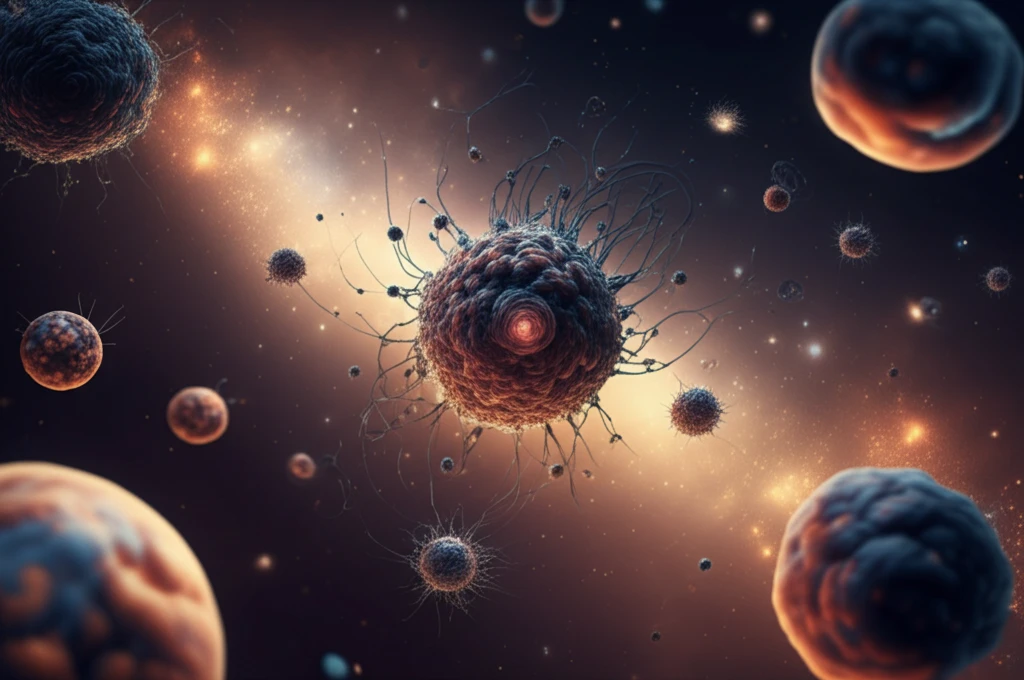
Unlocking the Universe's Secrets: How Neutrinos and Higgs Bosons Could Rewrite Physics
"Delve into the fascinating world of particle physics where researchers explore the relationship between neutrinos, Higgs bosons, and the fundamental forces shaping our cosmos, potentially leading to a groundbreaking new theory."
The universe is full of mysteries, and among the most perplexing is the incredibly small mass of neutrinos. These tiny, elusive particles have masses far smaller than other fundamental particles, sparking a quest to understand why. One intriguing possibility lies in the neutrinophilic Higgs doublet model (vHDM), which suggests that the smallness of neutrino mass arises from a tiny vacuum expectation value (VEV).
In essence, the vHDM introduces a new Higgs doublet that interacts primarily with neutrinos. This interaction gives neutrinos mass through a VEV that is much smaller than the VEV of the Higgs boson responsible for the masses of other particles. This model elegantly explains why neutrinos are so light, but it also opens doors to even more exciting possibilities when considered within the framework of Grand Unified Theories (GUTs).
Grand Unified Theories seek to unify the fundamental forces of nature – electromagnetism, the weak force, and the strong force – into a single, overarching theory. When the vHDM is incorporated into a GUT, it creates a framework where the scales of neutrino mass, the GUT scale, and the TeV scale (the energy scale of the Large Hadron Collider) are interconnected. This connection could revolutionize our understanding of particle physics and the universe itself.
The SUSY SU(5) GUT with Neutrinophilic Higgs Model

The neutrinophilic Higgs GUT model is a specific realization of these ideas within the context of a Supersymmetric (SUSY) SU(5) GUT. SUSY is a theory that postulates a symmetry between bosons and fermions, and SU(5) is a particular GUT group. In this framework, there's a fascinating relationship between three energy scales: the neutrino mass scale (around 0.1 eV), the GUT scale (approximately 10^16 GeV), and the TeV scale (around 1 TeV).
- Gauge Coupling Unification: Achieving accurate unification of the gauge couplings while maintaining proton stability.
- Flavor Changing Processes: Evaluating flavor-changing processes in the quark and lepton sectors.
- Neutrino Mass Generation: Explaining the smallness of neutrino masses through a tiny VEV of the neutrinophilic Higgs doublet.
- Dynamic Relation: Realizing the relationship between the neutrino mass scale, the GUT scale, and the TeV scale dynamically.
Implications and Future Directions
The neutrinophilic Higgs GUT model offers a compelling framework for understanding the mysteries of neutrino mass and the unification of fundamental forces. It provides a testable framework that could potentially revolutionize our understanding of particle physics. While challenges remain, the model's ability to connect seemingly disparate energy scales and phenomena makes it a promising avenue for future research. Further exploration of this model could lead to new insights into the nature of dark matter, the origin of matter-antimatter asymmetry, and the ultimate structure of the universe.
